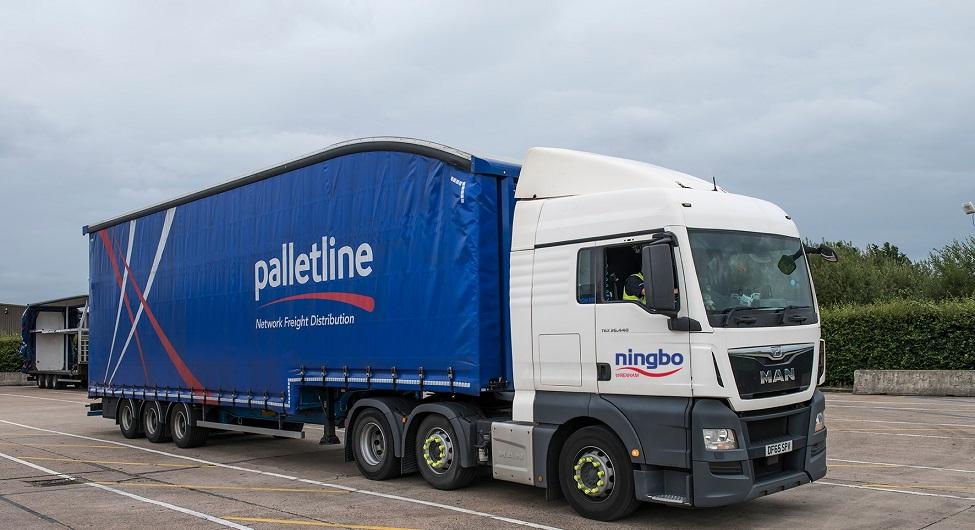Understanding the Importance of Palletised Distribution in Modern Logistics

In the fast-paced and interconnected world of global trade, the smooth movement of goods from one place to another defines the success of businesses. One of the most effective systems enabling this efficiency is palletised distribution. Though often overlooked, it is a vital backbone of modern logistics, ensuring that products reach their destinations safely, quickly, and cost-effectively. Whether moving goods across cities or continents, this system revolutionizes how companies handle freight, streamlines operations, and enhances overall supply chain performance.
The Concept of Palletised Distribution
At its core, palletised distribution refers to the process of consolidating goods onto pallets—flat transport structures made from wood, plastic, or metal—before shipping them to their destination. Each pallet serves as a unit load, allowing multiple products to be handled together rather than individually. This makes transportation safer and more efficient while reducing labor time and the likelihood of product damage.
The system has become a standard in logistics because it provides a uniform method for moving large quantities of goods through warehouses, distribution centers, and transportation networks. Instead of loose boxes being manually handled, pallets are easily lifted and moved using forklifts, pallet jacks, and automated systems. This simplicity and standardization have transformed the logistics sector, making palletised distribution an essential element of modern supply chains.
How Palletised Distribution Streamlines Logistics Operations
The power of this system lies in its ability to streamline multiple stages of logistics operations. From loading to unloading and warehousing, palletisation minimizes manual handling and boosts efficiency. Using standardized pallet sizes allows for optimal use of space in trucks, containers, and storage facilities.
Moreover, the system integrates seamlessly with automation technologies such as conveyor belts, robotic palletizers, and automated storage and retrieval systems. This reduces operational costs and increases throughput. For businesses managing high-volume shipments, these efficiencies translate directly into financial savings and faster delivery times.
Another major benefit is traceability. Barcodes, RFID tags, and tracking systems can be easily applied to pallets, allowing logistics managers to monitor the movement of goods in real-time. This visibility helps improve inventory control, reduces the risk of loss, and strengthens supply chain reliability.
The Role of Palletisation in Reducing Damage and Loss
One of the most significant challenges in logistics is product damage during transport. Improper handling, stacking, and shifting during transit can lead to considerable losses. Palletised systems mitigate this issue by providing stable platforms that keep goods secure and properly balanced.
Shrink wrap, straps, and corner protectors further reinforce pallet loads, ensuring the items remain intact even during rough handling or turbulent transport. As a result, businesses can deliver products to their customers in pristine condition, enhancing customer satisfaction and reducing costly returns or replacements.
This approach not only protects products but also supports sustainable business operations. By minimizing waste from damaged goods, companies can reduce their environmental impact while maximizing the utility of every shipment.
Economic Efficiency and Time Savings
The economic benefits of palletised systems are undeniable. Manual handling of individual packages is both time-consuming and labor-intensive. With pallets, entire shipments can be moved quickly and efficiently with mechanical assistance. This speeds up loading and unloading times, allowing transport vehicles to spend less time idle and more time on the road.
For warehouse operations, palletisation enables optimized stacking and space utilization. Vertical storage becomes possible, freeing up valuable floor space and improving warehouse organization. These efficiencies help businesses reduce operational costs and achieve better returns on their logistics investments.
Furthermore, the consistency of pallet sizes means transportation providers can plan more effectively. Truck and container loading can be standardized, leading to better fuel efficiency and fewer trips, further enhancing cost savings.
Palletised Distribution and Sustainability
Sustainability is an increasingly important concern in the logistics industry, and palletised systems contribute positively in this regard. Reusable pallets made from durable materials such as wood, metal, or plastic can last for many trips before needing replacement. Even when pallets reach the end of their life cycle, they can be recycled, minimizing waste and supporting circular economy practices.
In addition, the system supports more efficient transport by allowing better space utilization in trucks and containers. Fewer trips mean lower fuel consumption and reduced carbon emissions. For companies committed to green logistics, palletised operations align with environmental goals while maintaining high operational efficiency.
Some innovative companies are even adopting eco-friendly pallets made from recycled materials or biodegradable composites. These developments represent a growing trend towards more responsible and environmentally conscious logistics practices.
Technology Integration in Modern Palletised Systems
As technology continues to evolve, so does the efficiency of palletised networks. The integration of automation and data analytics has significantly enhanced the way businesses handle palletized goods. Smart tracking systems provide real-time data on shipment locations, conditions, and delivery times. This level of visibility not only improves customer service but also enables better planning and forecasting.
Warehouse automation systems equipped with robotic pallet handlers are now capable of building and breaking down pallets with precision and speed. These systems reduce dependency on manual labor while ensuring accuracy and consistency in operations. Additionally, artificial intelligence (AI) is being used to analyze logistics data, helping businesses optimize routes, predict maintenance needs, and reduce downtime.
By combining these technologies with traditional palletisation practices, companies are creating smarter, more responsive logistics networks that can adapt to fluctuations in demand and supply chain challenges.
Global Impact of Palletised Distribution
The influence of palletised systems extends far beyond local or regional logistics. On a global scale, they have become essential to international trade and supply chain management. The standardization of pallet sizes and handling procedures allows goods to move seamlessly across borders and between transportation modes—whether by air, sea, or land.
This global compatibility is particularly important for multinational corporations managing vast supply chains across different continents. The use of standardized pallets ensures that products can be efficiently transferred between warehouses, ports, and retailers without repackaging or reconfiguration. This consistency helps maintain delivery schedules, minimize delays, and ensure that international logistics operate smoothly.
In an increasingly interconnected global economy, this system acts as a universal language of logistics—simplifying trade, reducing barriers, and promoting efficiency at every level.
The Future of Palletised Distribution
The future of palletised systems is closely tied to innovation and sustainability. As industries move towards smarter, greener logistics, the role of pallets will continue to evolve. Automation will further enhance operational speed and accuracy, while emerging materials will make pallets lighter, stronger, and more environmentally friendly.
Blockchain technology is also expected to play a larger role, offering transparent and tamper-proof tracking of pallet movements throughout the supply chain. This can help eliminate inefficiencies, prevent fraud, and build greater trust among partners and customers.
Furthermore, the rise of e-commerce has reshaped distribution models, increasing demand for flexible, responsive logistics solutions. Palletised systems are adapting to these changes by offering scalable and modular handling solutions that cater to both large-scale freight operations and smaller, customized deliveries.
The emphasis on circular logistics—where resources are reused and waste minimized—will likely push companies to adopt more sustainable pallet management systems. Rental and pooling programs, where pallets are shared among users rather than owned outright, are already becoming more popular as businesses seek cost-effective and environmentally friendly solutions.
Challenges and Opportunities Ahead
While the benefits are clear, challenges remain. Rising material costs, supply chain disruptions, and varying international pallet standards can pose obstacles to efficient implementation. Additionally, maintaining the balance between automation and labor can be complex, especially for small and mid-sized businesses.
However, these challenges also create opportunities for innovation. Companies that invest in smarter technologies, better materials, and collaborative logistics models will be well-positioned to lead the next generation of efficient distribution systems. The growing emphasis on sustainability, traceability, and customer satisfaction will continue to drive the evolution of palletised systems into more advanced and integrated solutions.
Conclusion
Palletised distribution represents one of the most significant advancements in modern logistics. Its ability to enhance efficiency, reduce costs, and improve safety has made it indispensable in supply chain management worldwide. From reducing handling time to supporting sustainability initiatives, palletisation continues to evolve with new technologies and global trade requirements.
As businesses strive to meet the demands of faster delivery, lower emissions, and greater reliability, palletised systems will remain a cornerstone of logistics innovation. It is not just a method of moving goods—it is a strategic approach that shapes how the world trades, connects, and grows. In the years ahead, its importance will only increase as industries continue to seek smarter, greener, and more efficient ways to move the world’s products.
- Vibnix Blog
- Politics
- News
- Liberia News
- Entertainment
- Technology
- التعليم
- Art
- Causes
- Crafts
- Dance
- Drinks
- Film
- Fitness
- Food
- الألعاب
- Gardening
- Health
- الرئيسية
- Literature
- Music
- Networking
- أخرى
- Party
- Religion
- Shopping
- Sports
- Theater
- Wellness



